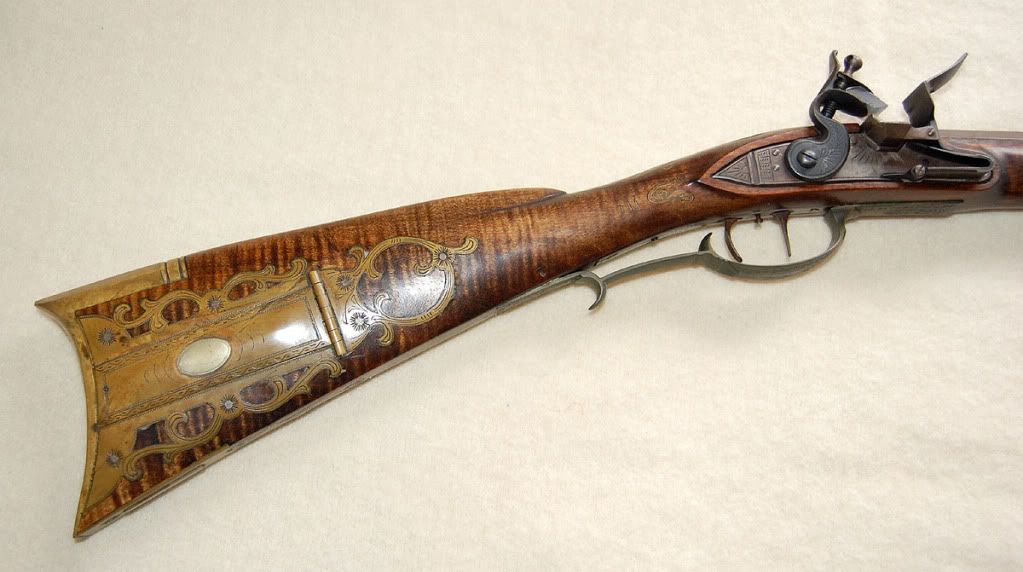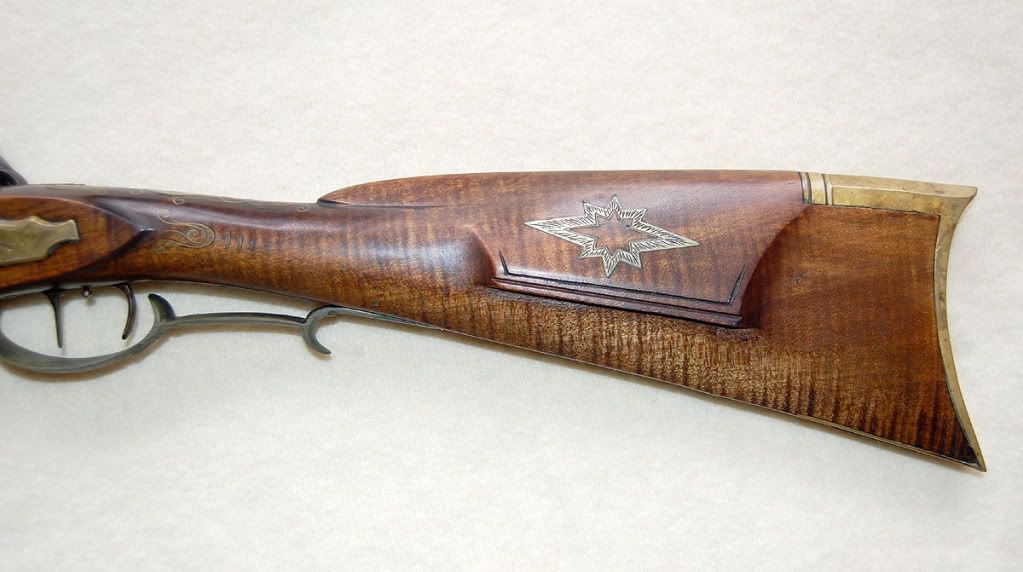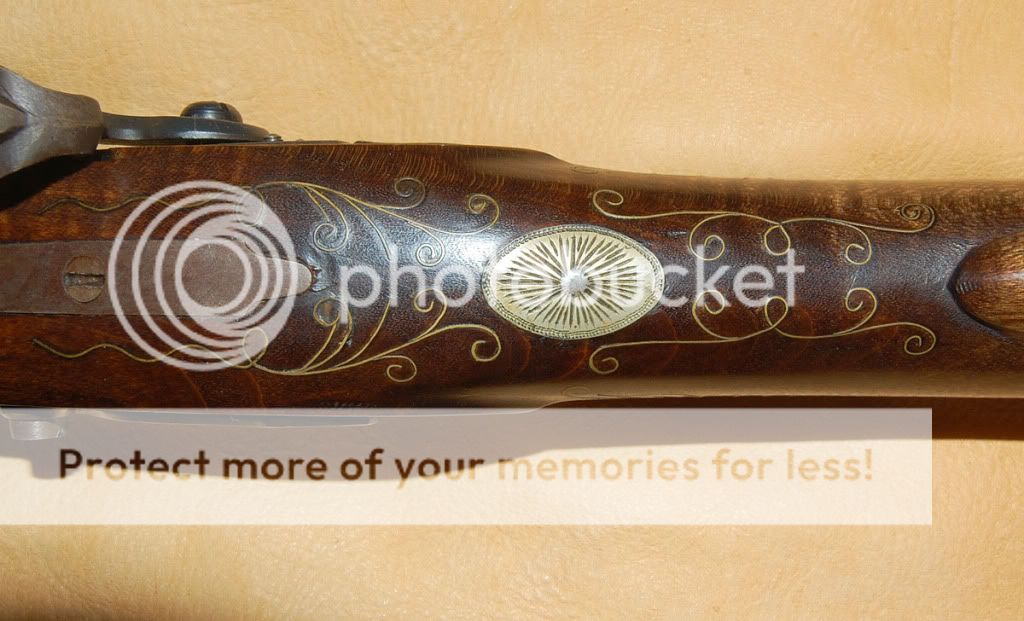One of the recurring themes of discussion on the forum is the fact that most of our modern-made guns don't conform to the requirements of those interested in HC/PC. A recent term for this type of gun is the 'platypus', a gun made with mismatched... wrong school... parts or incorrect architecture, and "there's no pratical use for a platypus". Reading through all the many, many different takes on this problem, it seems to be being said that platypus guns were made in the day, but aren't allowed, today. I find this pretty confusing, so I thought I'd offer those interested in and knowledgeable about such things a chance to demonstrate what they mean.
Would you be willing to analyze my gun? It was made back in the days before we learned all the neat stuff we know these days, back when, it is said, the old boys just built whatever they pleased, and they didn't really know what was right. Is it a platypus? If so, why, if not, why not?
This gun was built by a local builder whom I never knew. I bought it used in 1973. It is a .40 caliber rifle, barrel is straight, 13/16" x 42", twist 1:66. Weight is just shy of 8 pounds. The stock is of maple and straight, there is no cast. Drop at comb is 1 3/4", at heel is 3 3/4". The buttstock is 1 1/4" thick, heel to toe is 4 1/4". Overall length is 57", LOP 13". The lock-sideplate panels taper 1.52" to 1.4", wrist is 1.3" wide x 1.25" high. The lock is a Siler 5 1/4" x 15/16" fastened with two lock bolts. Trigger is double-set, single phase. The barrel is held with 3 keys. The patch box release is set into the brass inlay on the bottom of the buttstock. Furniture is brass, barrel escutcheons, cheekpiece inlay and thumbpiece are silver. Most of the brass and silver has engraving. There is no carving, but fairly extensive use of silver wire inlay.
For those with only a passing interest in this thread, here are a few photos just to show what the gun looks like in general. For those interested in offering your opinions on the gun, a link to an album of more detailed photos is at the bottom.





http://s881.photobucket.com/albums/ac20/Spence_2010/Thompson/?albumview=slideshow
It's something to do until squirrel season opens. :haha:
Spence
Would you be willing to analyze my gun? It was made back in the days before we learned all the neat stuff we know these days, back when, it is said, the old boys just built whatever they pleased, and they didn't really know what was right. Is it a platypus? If so, why, if not, why not?
This gun was built by a local builder whom I never knew. I bought it used in 1973. It is a .40 caliber rifle, barrel is straight, 13/16" x 42", twist 1:66. Weight is just shy of 8 pounds. The stock is of maple and straight, there is no cast. Drop at comb is 1 3/4", at heel is 3 3/4". The buttstock is 1 1/4" thick, heel to toe is 4 1/4". Overall length is 57", LOP 13". The lock-sideplate panels taper 1.52" to 1.4", wrist is 1.3" wide x 1.25" high. The lock is a Siler 5 1/4" x 15/16" fastened with two lock bolts. Trigger is double-set, single phase. The barrel is held with 3 keys. The patch box release is set into the brass inlay on the bottom of the buttstock. Furniture is brass, barrel escutcheons, cheekpiece inlay and thumbpiece are silver. Most of the brass and silver has engraving. There is no carving, but fairly extensive use of silver wire inlay.
For those with only a passing interest in this thread, here are a few photos just to show what the gun looks like in general. For those interested in offering your opinions on the gun, a link to an album of more detailed photos is at the bottom.





http://s881.photobucket.com/albums/ac20/Spence_2010/Thompson/?albumview=slideshow
It's something to do until squirrel season opens. :haha:
Spence
Last edited by a moderator:




